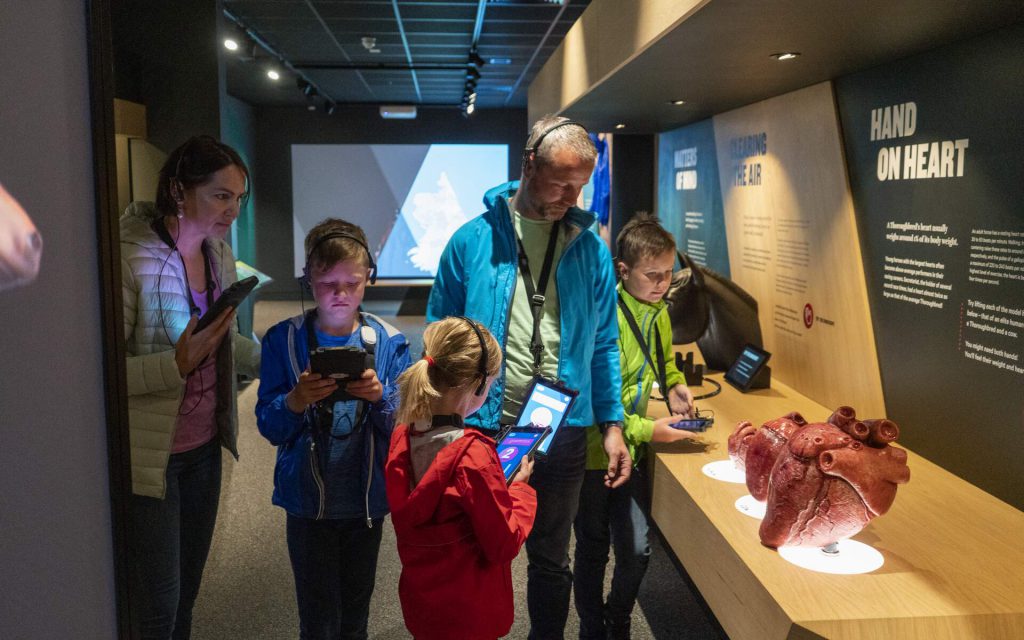
By Barry Coughlan
Anyone interested in horses will have more than a passing interest in tourism related events and attractions dotted throughout the island of Ireland.
The Irish National Stud and Gardens in Ireland’s Ancient East is one of the island’s treasures. A unique attraction of outstanding natural beauty and home to some of the most magnificent horses in the world, it brilliantly showcases the Irish passion for racehorses.
The Irish Racehorse Experience at the stud has recently won a top international award in the Themed Entertainment Sector. The Themed Entertainment Association’s Thea Awards celebrate achievement and excellence within the industry and are internationally recognized as among the most prestigious awards of the global attractions industry.
The Irish Racehorse Experience offers an immersive and interactive journey through the rich history and heritage of the Irish thoroughbred sector. It begins with the world’s first steeplechase in county Cork and recounts how Ireland and the Irish diaspora have become a world-leading force in breeding, training and racing horses.
The experience combines cutting-edge gaming technology with live video, audio and graphics. It presents visitors with the chance to buy and train their own thoroughbred racehorse, culminating in a thrilling real-time race, guaranteed to set pulses racing.
The Irish National Stud & Gardens, in Tully, County Kildare, is a magnet for horse enthusiasts from around the world and has attracted record visitor numbers in the past year.
As well as the Irish Racehorse Experience, the attraction gives visitors the opportunity to take a free guided tour that explains the history of the stud and its most famous racehorses. A visit in spring is particularly magical as it is then that foals can be seen taking their first steps.
County Kildare is known as the Thoroughbred County (one of two with Tipperary) as it is the heart of Ireland’s horseracing community. The Curragh, Punchestown and Naas racecourses are all wonderful places to witness top-class racing and soak up the excitement of a sport that has been part of Irish life for centuries.
The Japanese Gardens at the stud are also a world-class visitor attraction.
Created between 1906 and 1910, they are the finest of their kind in Europe. The gardens were laid out by Japanese master horticulturist Tassa Eida and his son Minoru with the aim of symbolizing the ‘Life of Man’ through trees, plants, flowers, lawns, rocks and water.
Visitors can also take a stroll through St. Fiachra’s Garden, which complements the Japanese Gardens by presenting the natural beauty of woodland, wetland, waterfalls, lakes and streams – a tribute to the Irish landscape in its rawest state.
Back in good old Dublin city, those who love indulging their passion for the arts have plenty to look forward to at the National Gallery of Ireland in 2023, following the announcement of its full program for the year.
It has already hosted three exhibitions in January, not least the popular free annual display of Turner watercolors bequeathed by English collector Henry Vaughan in 1900. Turner fans were also be interested in the large temporary exhibition on view in the gallery up to February 6.
But while those exhibits are no longer available now, there are others on view continuously.
From now to October 8, James Coleman’s most recent work is on show in the Sir Hugh Lane Room. The video installation presents a silent, large-scale projection of an uprooted poppy against a black background. This is the first display of the work at the gallery and its first appearance in Ireland.
On show until May 28 in the Grand Gallery is St Dymphna, the Tragedy of an Irish Princess.
A legendary sixth or seventh-century Irish saint and the daughter of a Celtic king, the exhibition explores Dymphna’s tragic life story. The panels by Goossen Van der Weyden are unique, as they are the only known pieces from the sixteenth century exploring the life of St Dymphna.
Then from February 25 a new spring exhibition will be on view in the Print Gallery. Running until June 5, Pastel Revealed will highlight the richness of the gallery’s pastel collection. With works spanning four centuries and showcasing a number of skilled practitioners from both Ireland and abroad, it will highlight how the pastel technique has changed over time.
Highlights for the summer include a solo exhibition entitled Lavinia Fontana: Trailblazer, Rule Breaker (May 6– August 27, 2023). The late sixteenth-century Bolognese artist Fontana was a ground-breaking artist of her time and is widely considered to be the first female artist to achieve professional success beyond the confines of a court or a convent.
The full 2023 exhibition program is available at the National Gallery of Ireland, but for those thinking of a Dublin autumn break, one should pencil in the exhibition on pioneering Irish artist Sarah Purser.
The Sarah Purser: Private Worlds will highlight the artist’s interest in a more intimate style of portraiture and in scenes of domestic life. It runs from October 21 until February 25, 2024 in the Sir Hugh Lane Room.
One of Dublin’s most popular attractions, the National Gallery of Ireland is located just a short stroll from Trinity College and Merrion Square in the city. It houses the nation’s collection of European and Irish art from about 1300 to the present day, and an extensive library and archive.
Entry to the permanent collection, and many of the temporary exhibitions, is free for all. Free guided tours are also available at weekends. Family packs and drawing and creative writing kits are available to borrow for free. Facilities include a shop, café, and wheelchair access to all levels.
For more information on all that’s happening in Ireland visit www.ireland.com
